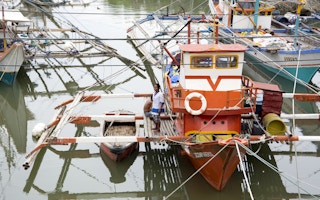When Typhoon Hagupit made landfall in the Philippines on December 6, memories of Typhoon Haiyan, which killed more than 6,300 people, were fresh in people’s minds. Some 227,000 families – more than a million people – were evacuated ahead of Hagupit’s arrival, according to the United Nations. The typhoon, one of the strongest of the season, killed some 30 people. All deaths from disasters are a tragedy, but the fact that this number was not much higher attests to the efforts that the Philippines has made to prepare for natural disasters.
To continue reading, subscribe to Eco‑Business.
There's something for everyone. We offer a range of subscription plans.
- Access our stories and receive our Insights Weekly newsletter with the free EB Member plan.
- Unlock unlimited access to our content and archive with EB Circle.
- Publish your content with EB Premium.
As Administrator of the United Nations Development Programme, I have seen firsthand the devastation and heartbreak caused by disasters around the world. Since the beginning of the century, more than a million people have died in storms like Hagupit and other major disasters, such as the 2010 Haitian earthquake, with economic damage totaling nearly $2 trillion.
These losses are tragic, but they are also avoidable. They serve as a reminder that disaster preparedness is not an optional luxury; it is a constant, intensive process that is necessary to save lives, protect infrastructure, and safeguard development.
The argument for investing in disaster preparedness is simple. If countries expect to experience natural hazards, such as violent storm seasons or major earthquakes, then investing time and resources in preparing for shocks will save lives and protect communities from other losses.
Unfortunately, governments often put different priorities ahead of disaster preparation. Other investments often take precedence, and donors have historically funded emergency relief much more readily than pre-disaster preparedness. The measures that are implemented tend to be stand-alone and piecemeal, rather than part of a larger, systematic risk-reduction plan.
That needs to change. Countries like the Philippines continue to demonstrate the benefits of investing in preparedness, especially when done as part of a larger risk-mitigation effort. Typhoon Hagupit is just the latest event to showcase this.
“
The argument for investing in disaster preparedness is simple. If countries expect to experience natural hazards, such as violent storm seasons or major earthquakes, then investing time and resources in preparing for shocks will save lives and protect communities from other losses.
The Philippine government’s quick, effective response saved many lives. But it is important to note that its efforts were not simply an overnight reaction to the oncoming storm. They were part of a national, comprehensive effort that was long in the making. Officials were wise to acknowledge their country’s vulnerabilities and to commit the resources and capital needed to build resilience.
The Philippines includes preparedness as a core component in its overall strategy for reducing disaster risk. Over the last decade, the country’s authorities have raised awareness, established and strengthened disaster-management institutions, and worked on recovering from past disasters, including Typhoon Haiyan. National and local disaster plans have been improved, standard operating procedures have been developed, and early warning systems have been put in place. The end result has been nothing short of a transformation of how the Philippines reacts to disasters.
The UNDP, and the wider UN system, is supporting governments as they place greater emphasis on disaster-risk reduction, including preparedness, by strengthening their institutional capacity to plan and act when needed. In addition to assisting with emergency relief, it is crucial that the international community help to introduce basic procedures for responding long before disaster strikes.
First responders, for example, need training and tools. Emergency shelters and evacuation routes must be planned and established using risk assessments and actual simulations. If communities are to be expected to make use of available resources, they need to be involved in the design and development of emergency plans. Risk reduction, including preparedness, is also, first and foremost, rooted in responsive governance.
In March 2015 a new global framework for disaster reduction will be agreed in Sendai, Japan. It is crucial that delegates push for transformational change that enables preparedness and saves lives. Furthermore, risk reduction needs to be integral to sustainable-development strategies.
The Philippines can serve as an example. The archipelago will always be in the path of tropical storms. There is little officials can do about that. But what they can do – and have done – is emphasize risk reduction and strengthen preparedness, thereby saving lives and building greater resilience. That is a lesson that all of us must learn.
Helen Clark, a former prime minister of New Zealand, is Administrator of the United Nations Development Programme.
Copyright: Project Syndicate, 2014.
www.project-syndicate.org











